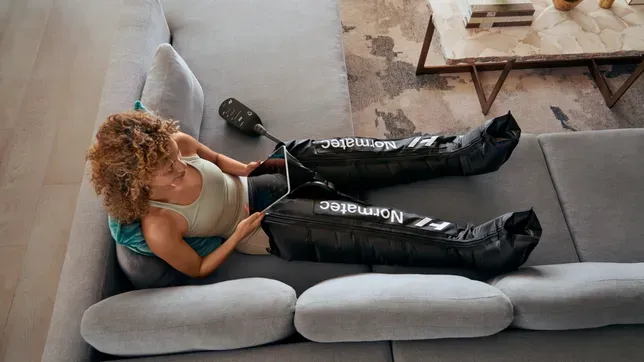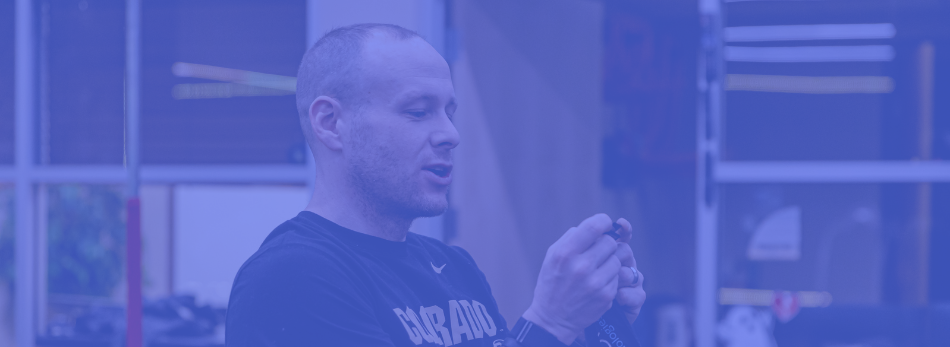Advice I’d Love to Give Myself 15 Years Ago
I've reached a point where I feel confident in my role as a strength and conditioning coach, so I thought it would be fun to share some advice with the idea of “what would have gotten me to this point faster?”

Reflecting on my journey as a strength and conditioning coach, I realize there have been numerous lessons learned, often through trial and error. Hopefully, it's more successful lessons than the failures. While I still have much to learn, I've reached a point where I feel a certain level of confidence and awareness in my abilities and the impact I can have on my athletes' performance and well-being. I’ve had the privilege of working with many talented athletes and learning from some exceptional mentors. Along the way, I've gathered insights that I wish I had known earlier in my career.
With that in mind, I thought it would be valuable—and perhaps even fun—to share some advice that could have accelerated my growth and effectiveness as a coach. These pieces of advice are not universally applicable and may not resonate with everyone, but they represent lessons that have been particularly meaningful to me.
My hope is that by sharing these reflections, I might help others on their own paths in the strength and conditioning field. If nothing else, maybe you won't repeat the same mistakes I did.
1. If you (or your athletes) are constantly facing setbacks, address the root cause
I can’t tell you how many times I’ve seen recurring issues with athletes and teams that seem minor (at the surface) but consistently cause setbacks. Instead of just managing the symptoms, think about how to eliminate the underlying problem.
Let’s say you have several athletes who frequently experience minor ankle sprains. Initially, you might just focus on immediate treatment—icing, compression, rest, and perhaps some basic rehabilitation exercises. However, if you notice this issue repeating itself across different athletes or the same athlete over time, it’s essential to dig deeper.
In one instance, I observed that several athletes were experiencing ankle sprains during games and practices. Rather than continuing to address each sprain individually, we conducted a thorough analysis. We found that many of these injuries were linked to inadequate proprioception and balance. We also noted that the shoes some athletes were wearing did not provide adequate support for the lateral movements required in their sport.
To address the root cause, we implemented a targeted balance and proprioception training program. This included exercises like single-leg stands on unstable surfaces, dynamic balance drills, and specific agility exercises that mimicked game situations. Additionally, we collaborated with a footwear specialist to ensure our athletes had the best shoes for their needs. This comprehensive approach significantly reduced the incidence of ankle sprains and allowed our athletes to train and compete more effectively.
Another example involves muscle strains. Suppose you notice that several of your basketball players are experiencing frequent hamstring strains. Initially, you might just provide standard treatments—rest, ice, compression, and stretching. However, to truly eliminate the problem, you need to investigate why these strains are happening in the first place. Are the athletes not warming up properly? Is there a weakness or imbalance in their strength training program? Are they overtraining without adequate recovery? Is it nutritional or hydration factors?
In one case, we discovered that the hamstring strains were primarily due to muscular imbalances and a lack of proper warm-up routines. We revised our training program to include more eccentric hamstring exercises, such as Nordic curls, heavy bilateral and unilateral RDLs, and and ensured that dynamic stretching and activation exercises were a mandatory part of the warm-up. This proactive approach not only reduced the occurrence of hamstring strains but also improved overall athletic performance.
By identifying and addressing the root causes of these recurring issues, you can create a healthier, more resilient team. It requires a mindset shift: instead of accepting these setbacks as part of the sport, view them as opportunities to improve your program and support your athletes more effectively.
2. Assess the trade-off between training intensity and recovery, and ensure it’s appropriate for your context
There’s always a trade-off between pushing athletes to their limits and ensuring they have adequate recovery time. You should ask yourself: how much recovery is necessary for my athletes in this specific phase of their training? If this doesn’t affect the way you structure your programs, you’re being overly inflexible.
Understanding this balance is crucial because it impacts not just the immediate performance but also the long-term development and health of your athletes. In the early stages of my career, I didn't always consider the critical importance of recovery. I would design intense training sessions without adequately factoring in the recovery needs, leading to over-trained and fatigued athletes. For those athletes in my early career - I apologize; we live and learn.
For example, during pre-season training, intensity is crucial. Athletes need to build their fitness levels rapidly to prepare for the upcoming season. However, the ability to recover quickly is equally essential to prevent injuries and ensure athletes can maintain high performance levels. We focused on intense, short bursts of training followed by comprehensive recovery sessions, including activities like foam rolling, stretching, hydrotherapy, and adequate nutrition. This approach allowed athletes to push their limits while still recovering efficiently, leading to optimal performance improvements.
In contrast, during the off-season, the priorities shift. There is more time available for recovery, so we can afford to push athletes harder for longer periods. Off-season training often includes extensive strength-building programs, endurance training, and technical skill development. Since athletes have more time to rest and recuperate between sessions, they can handle the increased load without risking burnout or injury. This period also provides an opportunity to address any lingering issues from the season, allowing for a more focused and individualized training approach.
One memorable instance involved a women's basketball team. During the competitive season, we implemented a strategy where we alternated between high-intensity training days and lower-intensity recovery days. This approach was tailored to the demands of their game schedule, ensuring they were at peak performance for important matches while minimizing the risk of overuse injuries.
On high-intensity days, we incorporated explosive movements, agility drills, and high-intensity/loading resistance training. On recovery days, we focused on light aerobic activities, mobility work, and mental recovery strategies. This is very akin to the Charlie Francis "High/Low Method". It's also more recently popularized by Daniel Bove and the Quadrant Method.
By carefully assessing the trade-off between training intensity and recovery, and adjusting your programs accordingly, you can optimize both the short-term and long-term performance of your athletes. It's about finding that delicate balance where athletes are pushed to improve while ensuring they have the necessary time and resources to recover. This approach not only enhances performance but also fosters a culture of sustainability and athlete well-being.

3. Spending time mastering your craft is almost always worth it
You’re going to be creating programs, monitoring progress, and adjusting plans a lot; you should be efficient and knowledgeable in this. You should know the key principles of strength and conditioning inside and out. You should be adept with the latest training technologies and methodologies. You should continually educate yourself about nutrition, recovery, and injury prevention, along with a myriad of other topics.
One of the biggest indicators of potential in new coaches is a dedication to becoming proficient with their tools and techniques. It’s rare to see someone overdo this; more often, those who excel are those who have invested time in learning and refining their skills.
For instance, understanding periodization and the science behind it allows you to design training programs that optimize performance and minimize injury risk. Knowing when and how to incorporate different phases, such as hypertrophy, strength, and power, can make a significant difference in an athlete's development. Additionally, being proficient in various training modalities—whether it's Olympic lifting, plyometrics, or sport-specific drills—enables you to tailor programs to meet the unique needs of each athlete.
Similarly, staying updated with the latest training technologies can enhance your effectiveness as a coach. Tools like force plates, wearable technologies like GPS/IMU trackers, and internal load monitoring technologies like heart rate monitors all provide valuable data that can inform your training decisions. Being skilled in interpreting this data allows you to make evidence-based adjustments, ensuring your athletes are training at the appropriate intensities and volumes.
Continual education is also critical. The fields of nutrition, recovery, and injury prevention are constantly evolving. By staying informed about the latest research and best practices, you can provide your athletes with the most effective strategies to enhance their performance and health. This might include learning about advancements in recovery techniques like cryotherapy, the benefits of different nutritional strategies for performance and recovery, or new approaches to preventing common injuries.
An example of mastering your craft can be seen in the implementation of data analytics with R/Python. Early in my career, I relied on basic data analysis techniques, which provided insights but lacked depth and efficiency. As I dedicated more time to learning about advanced Python libraries and techniques for data manipulation, visualization, and machine learning, I gained a deeper understanding of extracting actionable insights from athlete performance data.
This deeper knowledge allowed me to leverage Python's capabilities to analyze training outcomes, identify trends in performance metrics, and optimize training programs based on statistical analysis. By integrating data-driven decision-making into coaching practices, I could tailor training regimens more precisely to individual athlete needs, enhancing performance outcomes and strategic planning.
Another area where mastery pays off is in injury prevention and rehabilitation. Understanding the biomechanics of common injuries in your sport, and knowing how to implement preventative exercises and rehabilitation protocols, can dramatically reduce the incidence and severity of injuries. This not only keeps your athletes on the field but also builds their confidence in your expertise.
Investing time in mastering your craft is about more than just acquiring knowledge—it's about applying that knowledge to improve your athletes' performance and well-being. It demonstrates a commitment to excellence and a willingness to go the extra mile, which ultimately sets you apart as a coach.

Are You a Paying Member?
It's relatively cheap and I provide industry insights
Subscribe to the Industry Insider'sAs we approach the middle of this article, it’s important to note that the next 7 pieces of advice I'd give myself are exclusive to paying members of the AdamRingler.com website. By becoming a member, you gain access to in-depth discussions and practical strategies that can transform your approach to personal and professional development in athletics.
Membership at AdamRingler.com offers exclusive content designed to equip you with the tools and insights necessary for navigating the unique challenges of a career in sports. These lessons are crafted to provide a deeper understanding and actionable steps, ensuring you are well-prepared to achieve and sustain success in every aspect of your athletic & coaching journey.

Sign-Up for a Paid Membership to Access This Article

